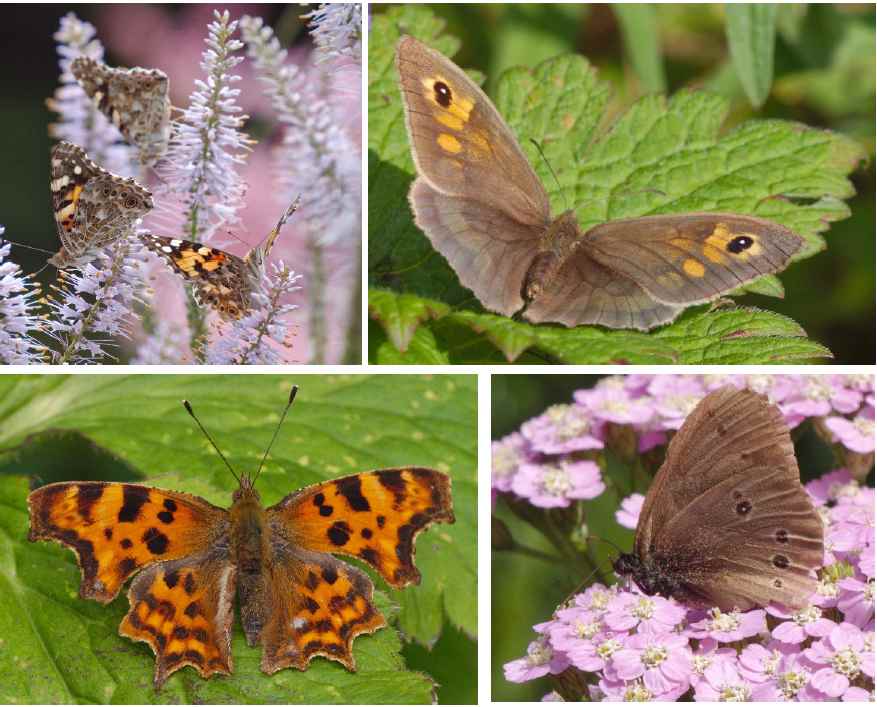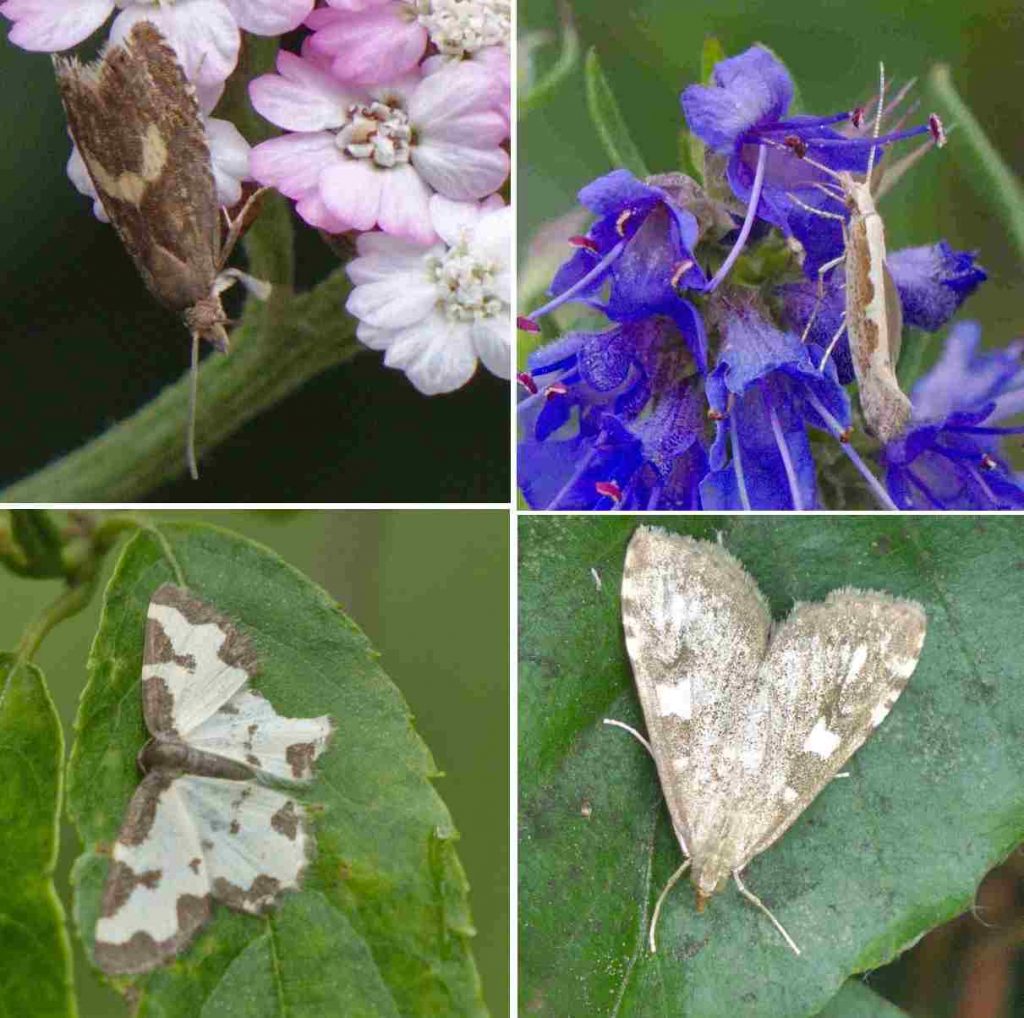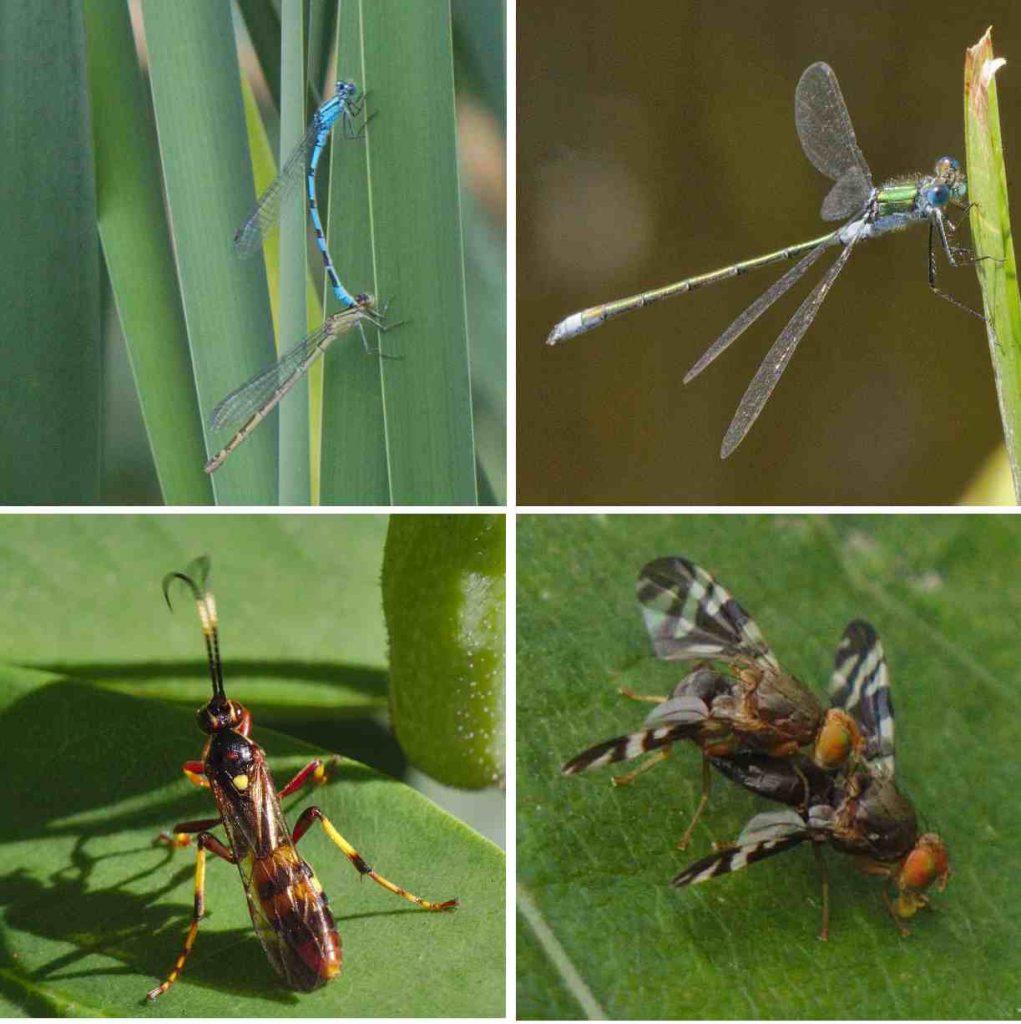
July 2019 has been described as the warmest globally on record. It was also a warm month at the Botanics, due in part to an intense heatwave in the last full week of the month which saw temperatures in the high 30s C in parts of England. The mercury also exceeded 30°C in parts of Scotland although the highest recorded at the Botanic Garden was ‘only’ 28.4°C, on 25th. Both sunshine (169.1 hours: 150% of the long-term average) and rainfall (100.2 mm: 197% of average) were well above normal. The high rainfall total was largely the result of two short but very wet spells, one on the 9th and 10th and the other at the month’s end as thunderstorms broke out at the end of the hot spell .
Seven more species were added to the Garden’s wildlife list in July. They were two moths, a sawfly, an ichneumon wasp, a fly, a ladybird and a gall mite. These increased the Garden’s total from 1,113 at the end of June to 1,120 species.
Birds: Thirty-six bird species were recorded at RBGE during July 2019. As in June, there were no particularly unusual sightings. House Martins were seen twice (4th and 18th) with Swallows also recorded twice (11th and 24th) and Swifts overhead on ten dates between 2nd and 24th. Chiffchaffs were recorded on eight dates, all in the first half of the month with no records after 15th. There was a single record of Black-headed Gull (18th), hinting at their return to central Edinburgh from their breeding sites. Collared Dove was recorded throughout the month, with a juvenile often seen near the Pond, and Grey Heron was seen around the Pond on 16 occasions. Sparrowhawk was recorded on six dates throughout the month and Tawny Owl once (31st). Kingfishers were again absent, and there were also no records of Jackdaw or Stock Dove. The complete list of 36 species recorded during June 2019 was: Blackbird, Blackcap, Black-headed Gull, Blue Tit, Bullfinch, Carrion Crow, Chaffinch, Chiffchaff, Coal Tit, Collared Dove, Dunnock, Feral Pigeon, Goldcrest, Goldfinch, Great Spotted Woodpecker, Great Tit, Greenfinch, Grey Heron, Herring Gull, House Martin, Lesser Black-backed Gull, Long-tailed Tit, Magpie, Mallard, Moorhen, Nuthatch, Oystercatcher, Robin, Song Thrush, Sparrowhawk, Swallow, Swift, Tawny Owl, Tree Creeper, Wood Pigeon, Wren.
Mammals and amphibians: A Toad was recorded on 27th, with Common Frog seen on five dates from 18th to the end of the month. There were also three Fox sightings, on 3rd, 19th and 31st.

Insects and other invertebrates: Eleven butterfly species were recorded in the Garden during July, one more than last month. The only species not also seen in June was Ringlet (one record on 25th July). The Painted Lady invasion that began last month continued throughout July, with hundreds being present in the Garden on the hottest days towards the end of the month. It has really been a tremendous year for this migrant butterfly. Otherwise the species list was the same as for June: Peacock (31st), Red Admiral (seven dates throughout), Comma (5 occasions, 18th to 31st), Small Tortoiseshell (31st), Small White (13 dates), Green-Veined White (9 occasions, 18th to 31st), Large White (2nd, 23rd and 31st), Speckled Wood (5 records) and Meadow Brown (24th, 28th and 30th). Daytime moth sightings included another two additions to the Garden’s moth list: Brindled Argent (2nd) and Common Drill (29th). Other records were the year’s second Common Marble (10th), Large Yellow Underwing (3rd), Little Grey (3rd; the Garden’s second record, almost a year to the day from the first, which was last year on 5th July), a beautiful Clouded Border (10th), Silver-ground Carpet (10th), Olive Pearl (13th), Diamond-back (29th) and Silver Y (29th). Hymenopteran sightings included two new Garden records: the sawfly Dolerus cf. madidus (2nd) and an ichneumon wasp belonging to the genus Diphyus. This was identified by an expert as ‘either D. palliatorius or D. trifasciatus‘. It is listed here as Diphyus cf. palliatorius, since D. trifasciatus has only two records in the National Biodiversity Network (NBN) Atlas, both from central England, whilst Diphyus palliatorius has 35 records, one of which is from Fife. Also, three of the known moth hosts of Diphyus palliatorius — Poplar Hawkmoth, Pink-bordered Sallow and Silver Y — are on the Garden’s moth list whereas the only moth host for the other Diphyus species has not yet been recorded from here. Evidence therefore points to Diphyus palliatorius being the more likely identification. Wool Carder Bees were active throughout July. Other records of interest were Gypsy Cuckoo Bee (31st; one of several bumblebees that parasitize other bumblebees, rather than making their own nests), the leaf-cutter bee Megachile willughbiella (8th), the small solitary bee Davies’ Colletes (several records from 10th), Bugle Sawfly (2nd and 18th), the wasp Ancistroceros scoticus (13th). July brought the year’s first dragonfly records: a Common Darter on 18th was the first (with subsequent sightings on 20th and 24th). It was followed by a Common Blue Damselfly on 20th and Emerald Damselfly records on 25th, 29th and 31st. Only five hoverfly species were seen during the month. They included Common Banded Hoverfly (throughout), Marmalade Hoverfly (throughout), Great Pied Hoverfly (24th and 25th), Tapered Drone-fly (24th) and Striped Hoverfly (31st). Notable fly records were Philophylla caesio (15th; new Garden record) and Dexiosoma caninum (20th). There were three records of Forest (Red-legged) Shield Bug (2nd, 11th and 14th) as well as single records of Parent Bug, Birch Shield Bug, Hawthorn Shield Bug and Birch Catkin Bug (all 14th), while Common Froghopper ‘spittle’ continued to be seen in the first half of the month (last sighting, 18th). A new ladybird species was added to the Garden’s list: Cream-streaked Ladybird. This was seen on 14th by Sarah Adamson, together with larvae and pupae, and the record confirmed by an expert. It turns out, though, that a ladybird thought to be a ‘Harlequin Ladybird’ and seen on both 24 May and 17 July by one of the Visitor Welcome Team was also a Cream-streaked, and therefore the 24 May record by Catherine Brash was actually the first record for the Garden and Sarah’s becomes the second. Fortunately for the Garden’s growing list of ladybird species (now 13, including Cream-streaked), genuine Harlequin Ladybirds have not yet been found within the Garden. Other ladybird species found during July were 7-spot throughout the month, 10-spot on 14th, and 2-spot also on 14th. Figwort Weevils and their larvae were seen on 2nd and 10th, the St John’s wort leaf beetle on 2nd, a Vine Weevil on 10th, and Rosemary Beetle on 18th, while Red Soldier Beetles were seen frequently from 12th onwards. A ground beetle, as yet still unidentified, was also seen (20th). A second record of Cucumber Spider Araniella opisthographa (2nd) was made in July while the galls of Aculus tetanothrixon goat willow (2nd) were a new Garden record of this gall mite. The galls of four other gall-mites were also found. Lastly, a White-legged Snake Millipede was liberated from the toilet block on 13th and there were four sightings of Garden Snail scattered through the month.

